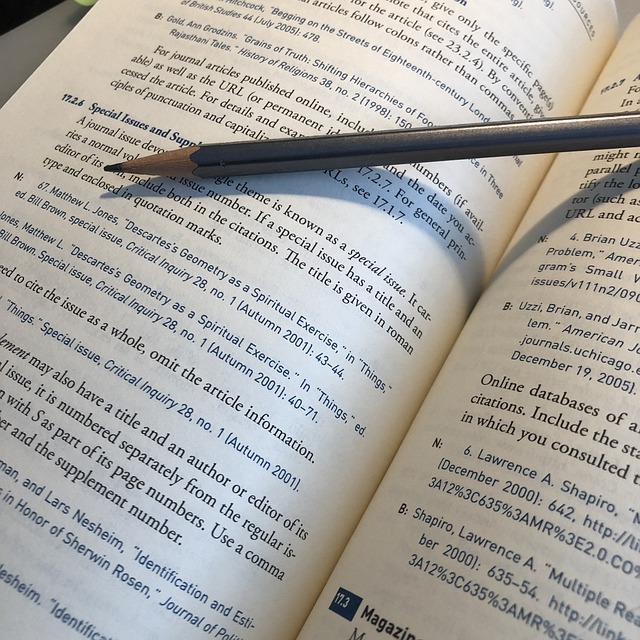How to Cite a Quote from a Book
When you quote or paraphrase an excerpt from someone else’s book, you must give credit to the original author. This is done by citing the source within your text and creating a reference as a footnote or end note.
Now, there are different formats for citing a book, depending on the nature of your writing.
In this blog post, we’ll discuss how to cite an entire book, a specific book edition, a book chapter, an online book and a translated one, using the APA, MLA, and Chicago style formats.
Introduction to Book Citation Formats: APA, MLA and Chicago Style
When it comes to citing a book, there are three main formats for you to consider.
The first is the American Psychological Association (APA) format, which is typically used in social sciences research books.
The second format is the Modern Language Association (MLA) style, which is often used in humanities and liberal arts books.
Finally, there is the Chicago Manual of Style (CMS), which can be used for any type of book.
It’s important to note that each style has its own rules and guidelines when it comes to how references should be cited.
Let’s get started!
How to Cite an Entire Book
In order to cite an entire book, you will need to include the author’s name, the year of publication, the title, the publisher’s name, and depending on the citation format, the city where it was published.
For example, citing a book by J. K. Rowling in APA format would look like this:
Author’s last name, Initials. (Publication year) Book title. Publisher name.
Rowling, J.K. (1997) Harry Potter and the Philosopher’s Stone. Bloomsbury Publishing.
In MLA format it would look like this:
Author’s last name, First name. Book title. Publisher name. Publication year.
Rowling, J.K. Harry Potter and the Philosopher’s Stone. Bloomsbury Publishing. 1997.
And in Chicago format it would look like this:
Author’s last name, First name. Book Title: Subtitle. Place of publication: Publisher name, Year of publication.
Rowling, J.K. Harry Potter and the Philosopher’s Stone. London: Bloomsbury Publishing, 1997.
How to Cite a Specific Book Edition

If you also want to indicate the book’s edition, you’ll need to add 2nd ed., 3rd ed., etc. after the title.
For example, citing a second edition of J.K Rowling’s Harry Potter and the Philosopher’s Stone in APA format would look like this:
Author’s last name, Initials. (Publication year) Book title (Edition). Publisher name.
Rowling, J.K. (1997) Harry Potter and the Philosopher’s Stone (2nd ed.). Bloomsbury Publishing.
In MLA format it would look like this:
Author’s last name, First name. Book title. Edition. Publisher name. Publication year.
Rowling, J.K. Harry Potter and the Philosopher’s Stone. 2nd ed. Bloomsbury Publishing. 1997.
And in Chicago format it would look like this:
Author’s last name, First name. Book Title: Subtitle. Edition. Place of publication: Publisher name, Year of publication.
Rowling, J.K. Harry Potter and the Philosopher’s Stone. 2nd ed. London: Bloomsbury Publishing, 1997.
How to Cite a Book Chapter
When citing a book chapter in APA style you will need to include the chapter’s name and optionally the range of pages being referenced.
For example, citing Chapter four of J.K Rowling’s Harry Potter and the Philosopher’s Stone in APA format would look like this:
Author’s last name, Initials. (Publication year). Chapter title. Book title (pp. page range). Publisher name.
Rowling, J.K. (1997). The Keeper of the Keys. Harry Potter and the Philosopher’s Stone (pp. 51–55). Bloomsbury Publishing.
In MLA format it would look like this (note the double quotation marks around the chapter title):
Author’s last name, First name. “Chapter title.” Book title. Edition. Publisher name. Publication year, Page range.
Rowling, J.K. “The Keeper of the Keys.” Harry Potter and the Philosopher’s Stone. Bloomsbury Publishing. 1997, pp. 51–55.
And in Chicago format it would look like this:
Author’s last name, First name. “Chapter Title.” Book Title: Subtitle, Page range. Place of publication: Publisher name, Year of publication.
Rowling, J.K. “The Keeper of the Keys.” Harry Potter and the Philosopher’s Stone, pp. 51-55. London: Bloomsbury Publishing, 1997.
How to Cite an Online Book

When citing a book accessible online or an eBook accessible through an online bookstore, you’ll need to include a website URL or a bookstore product link.
For example, citing J.K Rowling’s Harry Potter and the Philosopher’s Stone in APA format accessed from Amazon would look like this:
Last name, Initials. (Year). Book title. Publisher. URL
Rowling, J.K. (1997). Harry Potter and the Philosopher’s Stone. Bloomsbury Publishing. https://www.amazon.com/Harry-Potter-Sorcerers-Stone-Rowling-ebook/dp/B0192CTMYG
In MLA format it would look like this:
Author last name, First name. Book Title. Publisher, Year. Website, URL.
Rowling, J.K. Harry Potter and the Philosopher’s Stone. Bloomsbury Publishing, 1997. Amazon, https://www.amazon.com/Harry-Potter-Sorcerers-Stone-Rowling-ebook/dp/B0192CTMYG
And in Chicago format it would look like this:
Author last name, first name. Book Title: Subtitle. Place of publication: Publisher, Year. URL.
Rowling, J.K. Harry Potter and the Philosopher’s Stone. London: Bloomsbury Publishing, 1997. https://www.amazon.com/Harry-Potter-Sorcerers-Stone-Rowling-ebook/dp/B0192CTMYG
How to Cite a Translated Book
When citing a translated work, you’ll need to include the name of the translator.
For example, citing J.K Rowling’s Harry Potter and the Philosopher’s Stone translated by Jane Doe in APA format would look like this:
Last name, Initials. (Year). Book title (Translator initials, Last name, Trans.) Publisher.
Rowling, J.K. (1997). Harry Potter and the Philosopher’s Stone, (J. Doe, Trans.) Bloomsbury Publishing.
In MLA format it would look like this:
Author last name, First name. Book Title. Translated by Translator name, Publisher, Year.
Rowling, J.K. Harry Potter and the Philosopher’s Stone, Translated by Jane Doe. Bloomsbury Publishing, 1997
And in Chicago format it would look like this:
Author last name, first name. Book Title: Subtitle. Translated by Translator name. Place of publication: Publisher, Year.
Rowling, J.K. Harry Potter and the Philosopher’s Stone. Translated by Jane Doe, London: Bloomsbury Publishing, 1997.
Conclusion
Knowing how to properly cite a book may seem complicated but by following the guidelines above you should have no problem citing any quoted or referenced material from books in APA, MLA or Chicago style formats.
So don’t feel intimidated by these acronyms — citing books isn’t as hard as it seems!
Harry Wallett is the Managing Director of Cascadia Author Services. He has a decade of experience as the Founder and Managing Director of Relay Publishing, which has sold over 3 million copies of books in all genres for its authors, and looks after a team of 50+ industry professionals working across the world.
By following the above seven steps and taking the time to craft your book dedication carefully, you’ll be able to create language that touches readers and honors those who helped you make your book a reality.

Harry Wallett is the Managing Director of Cascadia Author Services. He has a decade of experience as the Founder and Managing Director of Relay Publishing, which has sold over 3 million copies of books in all genres for its authors, and looks after a team of 50+ industry professionals working across the world.
Harry is inspired by the process of book creation and is passionate about the stories and characters behind the prose. He loves working with the writers and has shepherded 1000s of titles to publication over the years. He knows first-hand what it takes to not only create an unputdownable book, but also how to get it into the hands of the right readers for success.
Books are still one of the most powerful mediums to communicate ideas and establish indisputable authority in a field, boosting your reach and stature. But publishing isn’t a quick and easy process—nor should it be, or everyone would do it!
A professional grade book takes 250+ individual tasks to complete. Cascadia is an expert in every single one of them. Do you want to harness our expertise to launch your book into the stratosphere? Chat with us!








Leave a Reply